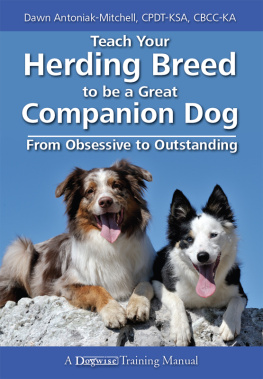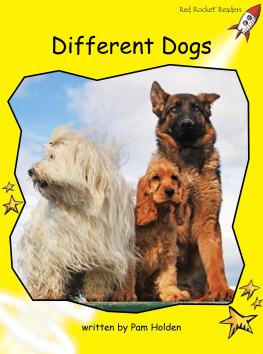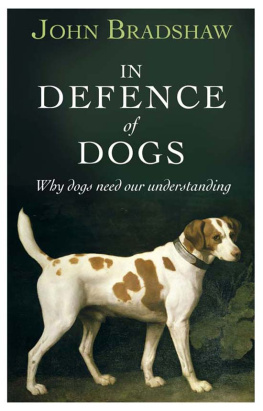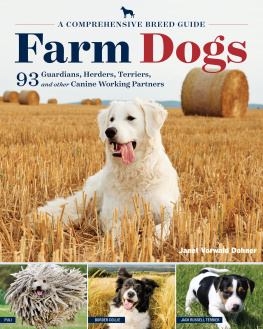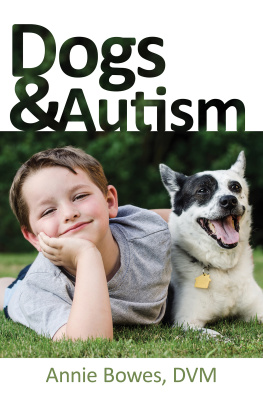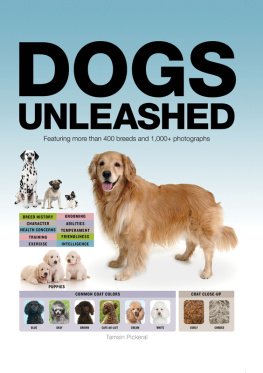Empowerment Training For Your Power Dog
Unleash the Positive Potential in Bully and Mastiff Breeds, Pit Bulls, and Other Strong Dogs
Dawn Antoniak-Mitchell, CPDT-KSA, CBCC-KA
Dogwise Publishing
A Division of Direct Book Service, Inc.
403 South Mission Street, Wenatchee, Washington 98801
1-509-663-9115, 1-800-776-2665
2019 Dawn Antoniak-Mitchell, CPDT-KSA, CBCC-KA
Graphic design: Lindsay Peternell
Cover design: Lindsay Peternell
All rights reserved. No part of this book may be reproduced or transmitted in any form or by any means, electronic, digital or mechanical, including photocopying, recording or by any information storage or retrieval system without permission in writing from the publisher.
Limits of Liability and Disclaimer of Warranty:
The author and publisher shall not be liable in the event of incidental or consequential damages in connection with, or arising out of, the furnishing, performance, or use of the instructions and suggestions contained in this book.
Library of Congress Cataloging-in-Publication Data
Names: Antoniak-Mitchell, Dawn, 1966- author.
Title: Empowerment training for your power dog : unleash the positive potential in bully and mastiff breeds, pit bulls, and other strong dogs / Dawn Antoniak-Mitchell, CPDT-KSA, CBCC-KA.
Description: Wenatchee, Washington : Dogwise Publishing, [2019] | Includes bibliographical references and index.
Identifiers: LCCN 2018061075 | ISBN 9781617812323
Subjects: LCSH: Mastiff breeds--Training.
Classification: LCC SF429.M36 A58 2019 | DDC 636.73--dc23 LC record available at https://lccn.loc.gov/2018061075
Photography and graphics: Dawn Antoniak-Mitchell; Dianne Dowden and Sasha (Australian Shepherd); Laurie Erickson (photographer); Jim Johnson and Trixie (French Bulldog/ Beagle cross); Kristi Jones and Jack (Rottweiler mix) and Jill (Pug); Charlie Leavitt and Stanley (Boston Terrier); Jeff Mitchell and Ember (Dalmatian); Sharon Sysel and Rock von Diesel II (Rottweiler); Stephanie Tornquist and Amira (Boxer) and Mowgli (American Bulldog mix); Marabeth White and Carly (Dalmatian) and Panda (Dalmatian); Freepix Common Use License, WikiMedia Common Use License, and Library of Congress Common Use License (images in the public domain).
ISBN: 978-1-61781-232-3
Printed in the U.S.A.
To Grandma
Acknowledgements
I owe many thanks to many people who helped me bring this book from a vague vision to a published reality. Once again, to all the wonderful people at Dogwisethank you for your patience, support, and expert guidance throughout this project. I am thankful to you all in more ways than you know. To my BonaFide instructor family, the deepest gratitude for your support and for keeping me on track. You all rock! To my friends, colleagues, and clients in the canine community who provided input, experience, photographs, and an opportunity to share your power dogs in a small way through this book, my sincere thanks. Without you, there would be no book. To Jeff, for the freedom, opportunity, and support to do crazy things like this. And for the astute resolution of my grammatical panic attacks. I love you.
And, most importantly, to my grandmother, Dorothy Favors, who passed away while I was working on this project. She was my fiercest ally my entire life, and the staunchest supporter of my obsession with all things canine. Thank you for everything, Grandma. The years I was blessed to have you in my life were not nearly enough.
Unlike my previous training books, this book was a surprisingly difficult one for me to write. The training portion of the book was relatively easy to put on paper; I use these types of exercises on a regular basis with my training students who own bully breeds, mastiffs, and other physically strong dogs. It was the breed histories that I struggled withI was definitely not prepared for the emotional rollercoaster I would be on while researching the power breeds. The past always informs the present, so its foolish to ignore it, no matter how unpleasant that past may have been. Every type or breed of dog we have today was developed for some specific purpose. Humans were pragmatists throughout most of our history with dogs; dogs were kept primarily to serve mankind in one capacity or another. Owning a dog strictly for companionship was a luxury only the wealthiest people could afford until well into the late 1800s; most people could only afford to keep a dog if the dog could work to earn his keep. The type of work dogs historically did still influences behavior in todays dogs, even though we rarely ask our dogs to perform their ancestral jobs anymore. I believe that understanding a breeds history is essential to helping that breed adapt to the present and move positively into the future, so we dont lose the wonderful diversity we have in our dogs.
So, off I went, headlong down the rabbit hole, chasing after historical information about the power breeds. I approach my canine research in the same manner I approach my legal research. I collect as many facts as I can and investigate all sides of an issue as thoroughly as possible. But I simply wasnt prepared for how emotionally difficult much of the information I gathered was going to be for me to process. I read books that I would never otherwise have any reason or desire to read. I read about the ferocious war dogs the ancients used against one another, the savage use of power breeds against native cultures and enslaved peoples throughout the world, and the use of power breeds in the bait sports (historical gambling and social activities pitting dogs against nearly every imaginable form of life, including bears, bulls, monkeys, tigers, badgers, donkeys, horses, and even humans) and dog-fight pits. I read historical and contemporary accounts of dog attacks on people and other dogs (outside the fighting pit context), and the disturbing issues surrounding present-day illegal dog fighting. I waded through websites extolling the aggressive virtues of certain lines of power dogs, which all but explicitly state these dogs are still being bred for use in the pit, and read disturbing arguments for allowing these breeds to do what they are being bred and trained to dofight. I examined statutes and ordinances related to vicious dogs and dangerous dog breeds, as well as the social and legislative history behind their enactments. This is all an unpleasant, but important, part of modern power dog history that cant be ignored or whitewashed. It is what it is and needs to be understood by every power dog owner and anyone who works with power dogs in training or rescue, if the power dogs we know and love today are to be respected and protected for the future.
Thankfully, in contrast to the depravity and cruelty that riddles the history of the power breeds, I also found just as much information related to the bravery and intelligence of these dogs. They have served as family guardians, police and military dogs, therapy dogs, service dogs, and faithful companions to countless people over the centuries. Beautiful power dogs have graced the rings of dog shows, instead of the rings of fight pits. There are many educational websites that share the numerous positive virtues of the power breeds that are often overlooked because of the negative reputations many of these breeds have acquired over the years. I read through websites discussing the efforts conscientious breeders are making to develop lines of dogs with less fire in them than previous generations had, so they can fit better into modern society. These positives certainly didnt diminish the negatives I learned about power dogs, but they did serve as bright counterpoints to what I learned about the dark brutality that fueled the creation and development of most power breeds we have today.


